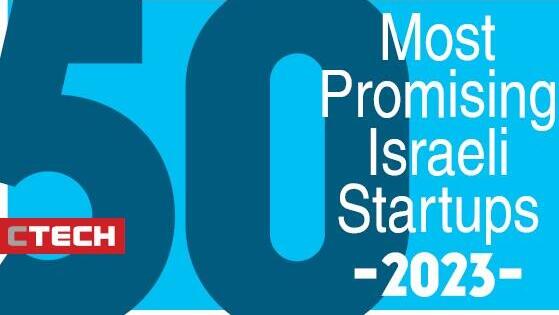
HR in the AI era
AI knowledge is becoming an increasing requirement for open roles at Priority Software
Priority Software’s VP of HR says the company uses AI to scale and enhance operations across departments but maintains there are no plans to replace human labor.
“AI enhances Priority’s HR organization by equipping different roles… with advanced AI tools to support multiple tasks,” commented Hilit Paz Lachower, Vice President of Human Resources. “At the same time, HR is taking a leading role in managing the human impact of AI adoption across the organization.”
CTech’s "HR in the AI Era" series explores how the AI revolution is impacting the workforce across Israeli high-tech companies. In this series, we uncover the effects (both personal and professional) that this technology shift has had on Startup Nation.
You can read the entire interview below.
Company name: Priority Software
Your name and title: Hilit Paz Lachower, Vice President of Human Resources
Names of founders and upper management: Sagive Greenspan
Year of founding: 1986
Investment stage: Acquired
Total investment to date: N/A
Field of activity: Software
Number of employees: 550
Office location: Rosh Ha’ayin, Israel (Headquarters), United States, and Belgium
Number of open positions: 27
On a scale of 1-10, how much does the AI revolution disrupt your company operation in general, and the HR department specifically?
6
AI definitely impacts and supports HR core functions at Priority.
Here are some examples:
- Recruitment – AI is used to streamline the recruitment process and optimize candidate screening for various open positions.
- Performance Management – AI aids in analyzing the current skill sets of our workforce.
- Learning and Development – We have designated AI champions across the company and launched dedicated AI training seminars.
- HR KPI Analysis – AI helps track and analyze key HR performance indicators.
AI enhances Priority’s HR organization by equipping different roles (HRBP, recruitment, etc.) with advanced AI tools to support multiple tasks. At the same time, HR is taking a leading role in managing the human impact of AI adoption across the organization, addressing concerns about job displacement, developing new skills, and adapting to changing role responsibilities.
What interesting AI tools do you and your staff use in employee management/recruitment?
Chat GPT, Claude, Time OS, NotebookLM, and StudyWise.
In which roles or tasks within your company has AI already begun to replace human labor (if at all)?
Priority utilizes AI to scale and enhance its operations across multiple departments, including Marketing, R&D, Support, and Product Management. There are no plans to replace human labor with AI – it’s simply about adopting AI to complement and improve our work.
What are the two major challenges you are coping with these days?
- The adoption of multiple tools and the redefinition of processes as new AI engines are introduced almost daily.
- Priority is a portfolio company with a diverse set of focus areas.
Have you experienced workforce-related challenges due to the war, and are you still feeling the impact of the security situation on your human resources?
Due to the war, we are facing challenges as some employees are absent from work for extended periods because of mandatory military reserve service. As a result, other team members are working harder to cover for them, helping to minimize any impact on business and operations.
Have you made changes to your workforce following the increased use of AI tools, both in terms of headcount and internal shifts between departments?
No, but AI knowledge is increasingly becoming a requirement in our open positions.
How does the global market uncertainty affect your workforce, in terms of employee numbers or departmental reallocations? Are you scaling your workforce up or down in different regions around the world?
There were no significant changes.
Do you estimate that in 2025–2026 you will increase or decrease the number of personnel? Explain why.
We expect an increase in our workforce due to both organic and inorganic growth.














